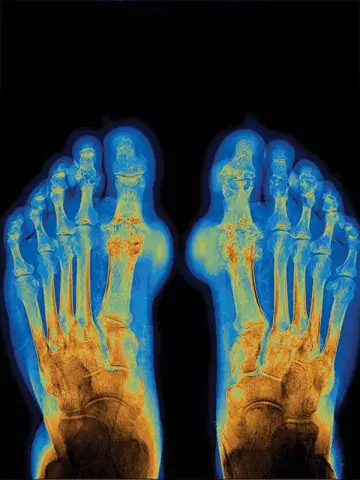Colchicine for gout: beneficial heart effects seen when used with urate-lowering therapy
By Rebecca Jenkins
Concurrent use of colchicine as a gout flare preventer in the early days of commencing urate-lowering therapy reduces the risk of ischaemic myocardial events, a large UK study suggests.
Patients with gout were at an increased risk of flares during the first few months of urate-lowering therapy, the study authors wrote in The Lancet Rheumatology. Many international societies recommended low-dose colchicine (0.5mg to 1.0mg per day) for flare prophylaxis, but the authors noted it was often not prescribed due to a lack of awareness and concerns about side effects. Gout flares had been associated with a temporally increased risk of cardiovascular (CV) events, they added, and it was known colchicine was effective in the secondary prevention of CV events in people with pre-existing CV disease.
Given this prior evidence, the authors set out to investigate the association between gout flare prophylaxis using colchicine and CV events among people with gout starting urate-lowering therapy in a retrospective cohort study using linked English primary care, hospitalisation and mortality data.
More than 111,000 patients newly diagnosed with gout between 1 January 1997 and 29 March 2021 and prescribed urate-lowering therapy for the first time on or after a gout diagnosis in a primary-care setting were considered for inclusion. Of the 99,800 patients deemed eligible to participate, 25,511 (25.6%) were female, 84,928 (85.1%) were white, 4063 (4.1%) had previous CV disease and 16,028 (16.1%) were prescribed colchicine prophylaxis (defined as a prescription that lasted 21 days or more).
The primary outcome of fatal and nonfatal myocardial infarction or stroke within 180 days of initiating urate-lowering therapy occurred in 1.4% of patients in the colchicine prophylaxis group and 1.8% in the no prophylaxis group, the authors reported.
Further analysis showed the weighted hazard ratio for the primary outcome was 0.82 (18% relative reduction) and the number needed to treat over 180 days was 154.
The findings provided an additional argument for using gout flare prophylaxis, the authors concluded, noting only 16.1% of patients in the cohort had been coprescribed colchicine.
Commenting on the study, Professor Lyn March, Professor of Rheumatology and Musculoskeletal Epidemiology at The University of Sydney, noted Australian clinicians were even less likely than those in the UK to prescribe gout flare prophylaxis, with PBS data showing only 7% of initial scripts for allopurinol therapy also initiated colchicine.
‘Despite being an observational study and not a randomised trial, the very large sample size and statistical adjustments provide convincing benefits of regular review and coprescription of colchicine in these preventive doses of 500micrograms (0.5mg) twice daily for the majority of patients with gout when initiating urate-lowering therapy,’ she told Medicine Today.
Colchicine was a safe medication if used within its narrow toxicity margin, Professor March said, adding that daily doses should rarely be more than 1.5mg (three 0.5 mg tablets maximum in 24 hours).
‘Colchicine dose should be reduced to 0.5mg once daily or 0.25mg in the setting of significantly reduced renal or hepatic function or when patients are concurrently on treatment with a strong CYP 3A4 inhibitor (e.g. calcium channel blockers) or if a P-glycoprotein inhibitor (e.g. tacrolimus) is required,’ she said.
Lancet Rheumatol 2024; https://doi.org/10.1016/S2665-9913(24)00248-0.


